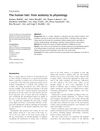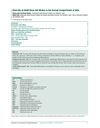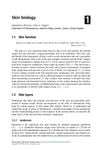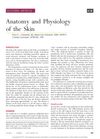The Role of Interface Geometry and Appendages on the Mesoscale Mechanics of the Skin
July 2023
in “
Research Square (Research Square)
”
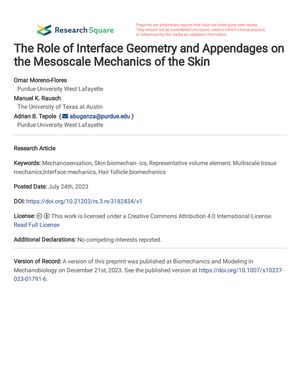
TLDR Skin's uneven surface and hair follicles affect its stress and strain but don't change its overall strength, and help prevent the skin from peeling apart.
This study investigates the biomechanics of skin by creating finite element models that include the three-dimensional interface between the epidermis and dermis and the presence of hair follicles. It finds that the sinusoidal interface, which represents Rete ridges, leads to stress concentration but does not alter the overall mechanical response of the skin. The stress distribution is three-dimensional and anisotropic, with high-stress bands connecting the valleys of the Rete ridges and low-stress bands at the peaks. The presence of hair follicles results in strain concentration in the epidermis adjacent to the follicle and the tissue surrounding the hair below the epidermis, aligning with the locations of mechanoreceptors responsible for the sense of touch, except for the bulb region. The study emphasizes the significance of skin's mesoscale heterogeneities in its mechanical function and in preventing skin delamination.
